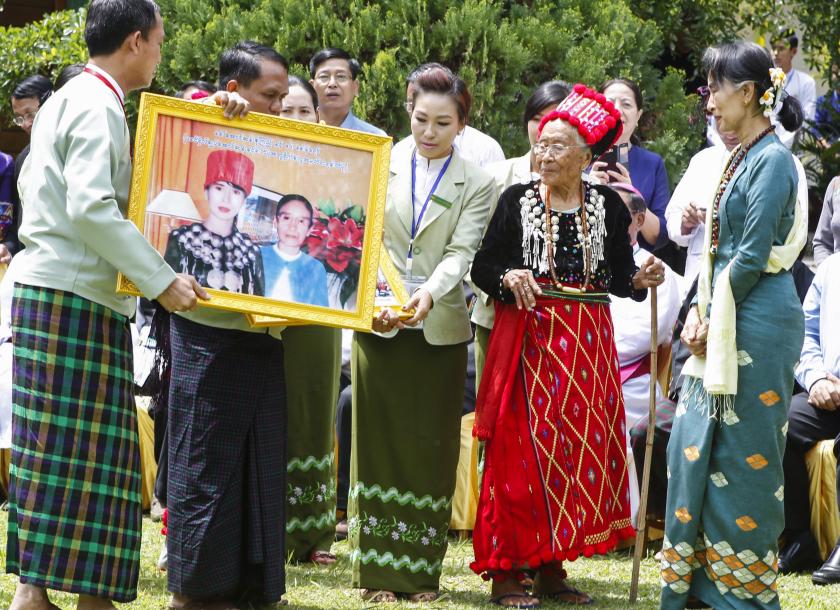Regional conflict stands in the way of Foreign Direct Investment (FDI) in Kachin State, which led to Chinese investors having second thoughts on investment
14 Aug 2018
Foreign investment in Kachin State currently happens in spite of, not because of, the government.
IN an article “Kachin fighting scaring off investors: official” published by The Myanmar Times on June 21, U Tun Kyaw Kyaw, assistant director of the state’s Directorate of Investment and Company Administration (DICA), said that Chinese investors who had expressed interest in construction, mining, livestock, agriculture, electricity and tourism have had second thoughts as the fighting intensified in the region. Given the instability of many areas in the state, he said it was difficult for investors to come.
Most instructive were these comments, because they showed a lack of understanding of what it takes to attract foreign direct investment to Kachin State. The current state of belligerence has much less to do with lack of foreign investor interest than he might think.
On one hand, the Kachin State government tolerates a great deal of illicit Chinese investment, into banana farms, and smash and grab gold mines. The Chinese’s use of Myanmar citizens as straw buyers or proxies is pretty well understood, but little is done about it. Yet, legitimate foreign investors must endure the expensive and time-consuming processes required by DICA/ Myanmar Investment Commission (MIC) for their own investments, pay taxes, and strive to be compliant with Myanmar law as understood.
Where I work in Putao, a land boom is underway, thanks to Chinese carpetbaggers coming in and working to acquire property through a handful of local straw-men. This has distorted the market, as well as shattered what little faith people in the community may have in the rule of law. Inconsistent enforcement of the laws on the books does not inspire investor confidence.
Difficult to access
Should a foreign investor decide to look around Kachin State, a literal barrier is encountered in that much of the state is off-limits to foreigners, and very short-term permits must be wheedled out of officials in several ministries and at multiple levels, from the Union government in Nay Pyi Taw down to the village tract level.
Arranging these is a time-consuming pursuit, and in my own oft-repeated experience, DICA - of no help whatsoever - couldn’t care less whether or not any legitimate business came in the door or not. Yet in granting such permits, the seeker is made to feel as if he or she is making a mighty imposition on the people who grant them. DICA could and should hold itself responsible for smoothing out any and all interactions a potential investor may have with various ministries of the regional government.
In making legal land acquisitions, the entire machinery of government slows down to a snail’s pace when it comes to issuing a new and clean Form 105. The fastest I have seen this happen in any township in Kachin State is six months. This is an area DICA could help a foreign investor navigate, but when we have suggested this, we get only blank looks from the relevant officers.
In short, foreign investment in Kachin State currently happens in spite of, not because of, the government.
U Tun Kyaw Kyaw also seems to have forgotten the massive investments made into Kachin State by the mobile telephone operators, and especially the tower companies. Hundreds, if not thousands of towers were built from 2014 up to the present, representing tens of millions of dollars in foreign direct investment. My company was tangentially involved in the effort for Putao. I can safely say that in making this herculean effort, absolutely no help was forthcoming from the Kachin State government and certainly not from DICA. Tower companies virtually did everything on their own. They did so against slow-burn resistance from every level of government when it came to seeking building permits, new Form 105’s for leases as well as access for foreign engineers. Almost no business requiring approach to government was easy and painless.
More bananas?
Reference is made in the article to the proposed “Myitkyina Economic Development Zone” in Nankyin village. We have known about this for quite some time. Any guesses about how the 4,500 acres for this thing were acquired? And that much land for a trifling $1.1 million investment is baffling, especially considering that the area has no infrastructure, roads or power supply. Our guess is that “development” will be just more bananas. If this is considered wished-for investment, then the bar is set pretty low. Although promised during the MoU signing in early May, details of this scheme have not gone through any sort of public process.
Although I’d hate to suggest that what is needed is a lavish junket undertaken with foreign aid funding, Kachin State's MIC and DICA need to send some working-level officials abroad, such as Cambodia or Vietnam. There, they should meet and walk and talk with counterpart officials of countries who actually know what to do in order to attract - and keep attracting - the foreign direct investment that developing economies need to thrive.
Perhaps in Vietnam they can tour the spanking new Samsung factory - the one which was originally going to be built in Myanmar.
(The Myanmar Times: https://www.mmtimes.com/news/govt-rather-conflicts-stands-way-fdi-kachin.html )











